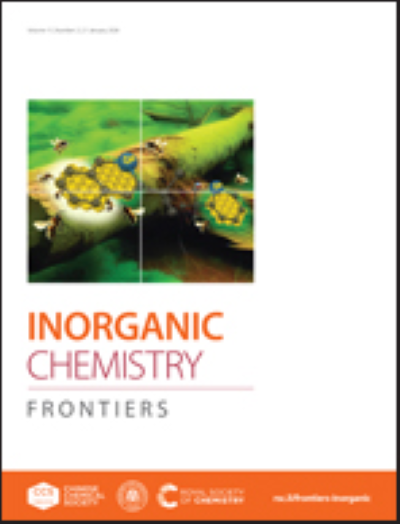Oxygen-Coordinated MOF Membrane Facilitated Construction of Supported Co2P/CoP@C Heterostructures for Water Electrolysis
IF 6.1
1区 化学
Q1 CHEMISTRY, INORGANIC & NUCLEAR
引用次数: 0
Abstract
Integration of cobalt phosphides (Co2P and CoP) in carbon matrix shows great promise for developing high-performance catalysts for water electrolysis. Nevertheless, the control synthesis of these two phases with effective interface, uniform dispersion, and simplified synthesis process are still challenging. Herein, we proposed a strategy that involves pre-construction of Co/CoO@C heterostructure followed by post-conversion by phosphorization to achieve the precise synthesis of Co2P/CoP@C heterostructure, which was realized by utilizing MOF as the self-sacrificial template. The oxygen-coordinated MOF that shows advantages in building Co/CoO heterostructure and further conversion to phosphides was employed in this work and grown into a high-quality membrane via cathodic electrodeposition on the graphite substrate (Gss). The obtained catalyst (Gss-Co2P/CoP@C-800) requires 146 and 365 mV overpotentials to reach a current density of 100 mA cm-2 for HER and OER respectively, and 1.54 V to reach current density of 10 mA cm-2 for water electrolysis. Beyond the significantly enhanced conductivity that originates from the robust interaction between MOF and Gss, the establishment of effective Co2P/CoP interface also plays a pivotal role in contributing to the high performance of Gss-Co2P/CoP@C-800. As revealed by density functional theory (DFT) calculations, the unique d-orbital electron distribution of Co2P/CoP and the enhanced state density near the Fermi level facilitate its efficient electron transport and renders the Co2P/CoP heterostructure region a crucial active site for water electrolysis. This study would provide new insights into the rational design and construction of heterostructures based on MOFs for efficient and green energy conversions.求助全文
约1分钟内获得全文
求助全文
来源期刊

Inorganic Chemistry Frontiers
CHEMISTRY, INORGANIC & NUCLEAR-
CiteScore
10.40
自引率
7.10%
发文量
587
审稿时长
1.2 months
期刊介绍:
The international, high quality journal for interdisciplinary research between inorganic chemistry and related subjects
 求助内容:
求助内容: 应助结果提醒方式:
应助结果提醒方式:


